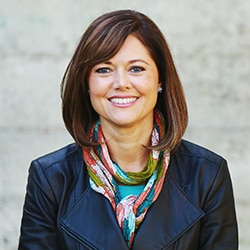
Taking control of your personal finances is simple in theory—but it’s incredibly easy to go off the rails. No matter if you’re managing money for the first time or you’ve spent decades working to get ahead financially, adopting one new habit may be the ticket to more success.
The most effective financial steps you can take will make it easier to avoid self-destructive behavior, and one of the most effective I’ve discovered is surprisingly easy: Automate your financial plans. It’s a clever way to outsmart yourself, so you accomplish more without having to think about it.
There are a wide range of automated systems to do the heavy lifting for you. The sooner you put your financial goals on autopilot, the more security you and your family will have. Here are a few ways to radically improve your financial life using the power of automation.
Use Payroll Deposits to Build Savings
Ask your employer to split your payroll deposit into two or more separate accounts. For example, you could have a flat amount or a percentage per pay period sent to an FDIC-insured savings account. This strategy is especially effective for any short-term goal, such as building an emergency fund, buying a home or saving for a vacation.
The secret to success is putting away small amounts on a regular basis. Even if you can set aside only $25 a month, you’ll be surprised how quickly your balances grow over time. When you treat savings like mandatory bills that you owe yourself and automate them, you probably won’t even miss the money.
Participate in a Workplace Retirement Plan
Workplace retirement plans—such as a 401(k) or a 403(b)—work so well because contributions must be automatically deducted from your paycheck. As soon as you’re eligible, participate and contribute at least enough to max out any employer matching.
One good rule of thumb is to contribute a minimum of 10% to 15% of your gross income for retirement. But if you experience a financial rough patch, you can stop or reduce your contributions at any time.
For 2019 you can contribute up to $19,000 annually to most workplace retirement accounts. Once you reach age 50, you’re allowed to contribute up to $25,000 per year. These annual limits are subject to change, so get updated information from your benefits administrator.
Set Up Recurring Deposits
In addition to a 401(k) or a 403(b) account, you can easily set up a retirement account on your own. Anyone with earned income can contribute to an IRA (individual retirement account) or an account for the self-employed, such as a solo 401(k) or a SEP-IRA. Fund your account by creating recurring transfers from your bank account.
You can use this same strategy for other financial goals you may have by scheduling transfers to various accounts. For instance, you could move funds on a regular basis to a high yield savings account, a CD, a 529 college savings account or a health savings account (if you have a qualifying health plan).
Use Automatic Portfolio Rebalancing
Automation can work for you in more ways than you may know. Most investing firms offer automatic rebalancing to help you maintain the appropriate level of investment risk for your long-term retirement goals. Let’s say you choose an allocation of 50% stocks and 50% bonds in your 401(k) or IRA. If the market moves up over time, then the percentage of your account allocated to stocks might grow to 60%, exposing you to additional risk.
But if you elect automatic rebalancing, the account would periodically sell enough stocks and buy bonds in order to return to your original 50/50 allocation. This keeps risk in check as market fluctuations cause your investments to go up or down in value.
Start Early, Get Advice, Be Consistent
One of the most important factors in how much you accumulate depends on when you start investing, even if you don’t have much to invest. Getting an early start allows your money to compound and grow exponentially over a longer period of time.
In addition to using automation for financial success, it’s wise to seek help when needed. Don’t be afraid to turn to a financial pro, such as a retirement planner, insurance agent or tax accountant, for specialized advice. Some financial institutions even offer free advice to help you select the best investments for your goals and level of risk tolerance.
To sum up, financially healthy people create goals and build habits into their lives that get results. Take stock of your situation and use the power of automation to set yourself up for a secure financial future.

Laura Adams is a personal finance expert, the host of the top-rated Money Girl Podcast and the author of multiple books, including Money Girl’s Smart Moves to Grow Rich.
Watch Laura talk about the best advice her dad gave her in this short video.

